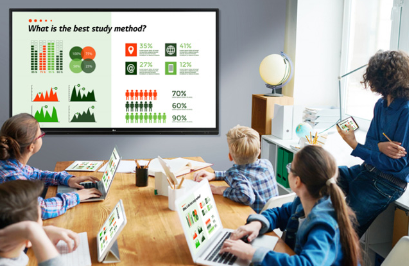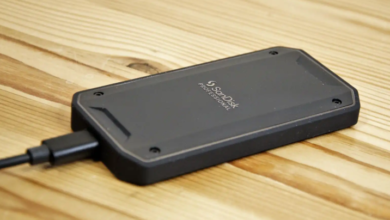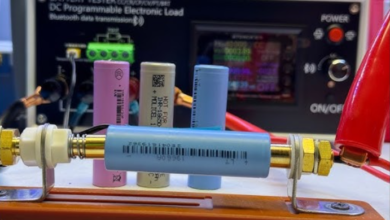A Step-by-Step Guide to Implementing Interactive Flat Panels in Your School

Integrating technology into the classroom is essential for modern education, and interactive flat panels are at the forefront of this transformation. These versatile tools can significantly enhance the teaching and learning experience by making lessons more interactive, engaging, and effective. However, successfully implementing interactive flat panels in your school requires careful planning and execution. This step-by-step guide will walk you through the process of bringing interactive flat panel displays into your school, ensuring a smooth transition and maximizing the benefits for both students and teachers.
1. Assess Your School’s Needs and Set Goals
Before you begin the implementation process, it’s crucial to assess your school’s specific needs and set clear goals for integrating interactive flat panels. Start by considering the following:
- Educational Objectives: Identify the key learning outcomes you want to achieve with the help of interactive flat panels. For example, are you looking to enhance student engagement, improve collaboration, or provide more personalized learning experiences?
- Classroom Requirements: Evaluate the number of classrooms that will benefit from interactive flat panels and determine the most suitable locations for installation. Consider factors such as class size, subject matter, and the current level of technology integration in each classroom.
- Budget Constraints: Establish a budget for the project, including the cost of the interactive flat panels, installation, training, and ongoing maintenance. Be sure to explore funding options, such as grants or partnerships, to help cover the costs.
By assessing your needs and setting specific goals, you’ll have a clear roadmap for implementing interactive flat panel displays that align with your school’s educational vision.
2. Choose the Right Interactive Flat Panels
Once you’ve defined your goals and budget, the next step is selecting the right interactive flat panels for your school. Here’s what to consider when making your choice:
- Display Size: The size of the interactive flat panel display should match the classroom’s dimensions and the number of students. Larger classrooms may require bigger panels to ensure that all students can clearly see the content.
- Touch Capability: Look for interactive flat panels that support multi-touch functionality, allowing multiple students to interact with the screen simultaneously. This feature is particularly beneficial for collaborative learning activities.
- Software Compatibility: Ensure that the interactive flat panels are compatible with the educational software your school uses or plans to use. The ability to integrate seamlessly with existing tools is essential for maximizing the panels’ utility.
- Durability and Warranty: Choose panels that are designed to withstand the wear and tear of daily classroom use. A good warranty and reliable customer support are also important factors to consider.
By selecting the best interactive flat panels for your needs, you can ensure that they will be a valuable addition to your school’s classrooms.
3. Plan the Installation Process
Proper planning of the installation process is key to minimizing disruptions and ensuring that the interactive flat panels are set up correctly. Follow these steps:
- Coordinate with IT and Facilities Staff: Work closely with your school’s IT and facilities teams to plan the installation. They can help determine the best locations for the panels, manage electrical and networking requirements, and oversee the physical installation.
- Schedule Installation: Choose a time for installation that minimizes disruption to the school day, such as during a break or after school hours. Ensure that all necessary equipment, such as mounting brackets and cables, is on hand before installation begins.
- Test the Panels: Once the panels are installed, conduct thorough testing to ensure they are functioning correctly. Check the touch sensitivity, display quality, and software compatibility to address any issues before the panels are used in the classroom.
4. Provide Training for Teachers
Training is a critical component of successful implementation. Teachers need to feel confident using the interactive flat panels to fully leverage their capabilities. Here’s how to approach training:
- Initial Training Sessions: Organize training sessions that cover the basics of operating the interactive flat panels, including navigating the software, adjusting settings, and troubleshooting common issues.
- Advanced Training: Offer additional training focused on integrating the panels into daily lessons. This can include strategies for creating interactive content, using multimedia resources, and engaging students with hands-on activities.
- Ongoing Support: Provide ongoing support and resources for teachers as they continue to use the interactive flat panels. This could include access to online tutorials, a helpdesk for technical issues, and regular workshops to explore new features and teaching strategies.
Effective training ensures that teachers are equipped to make the most of the interactive flat panels, enhancing the overall learning experience for students.
5. Integrate the Panels into Daily Teaching
With the panels installed and teachers trained, it’s time to integrate the interactive flat panels into daily teaching practices. Here are some tips for successful integration:
- Start Small: Encourage teachers to start with simple uses of the interactive flat panels, such as displaying presentations or videos. As they become more comfortable, they can explore more advanced features like interactive quizzes and collaborative projects.
- Collaborative Learning: Promote the use of interactive flat panels for group activities and collaborative learning. This not only engages students but also helps develop important skills such as teamwork and communication.
- Personalized Learning: Utilize the panels to support personalized learning by creating lessons that cater to different learning styles and paces. For example, teachers can use interactive exercises that adapt to each student’s progress, providing targeted feedback and support.
- Continuous Feedback: Regularly gather feedback from teachers and students about their experiences with the interactive flat panels. Use this feedback to make adjustments and improvements, ensuring that the technology continues to meet the needs of the classroom.
6. Evaluate and Expand
After the interactive flat panels have been in use for a while, it’s important to evaluate their impact and plan for future expansion. Consider the following:
- Assess Impact: Evaluate the effectiveness of the interactive flat panels in achieving your school’s educational goals. Look at metrics such as student engagement, academic performance, and teacher satisfaction.
- Plan for Expansion: If the panels have proven successful, consider expanding their use to additional classrooms or upgrading existing panels with newer models or software.
- Budget for Upgrades: Technology evolves rapidly, so it’s important to budget for future upgrades and maintenance to keep your interactive flat panel displays up to date and functioning effectively.
Conclusion
Implementing interactive flat panels in your school is a significant investment that can greatly enhance the educational experience. By following this step-by-step guide—from assessing your needs and selecting the right panels to providing training and integrating the technology into daily teaching—you can ensure a smooth and successful transition. With thoughtful planning and execution, interactive flat panels can become a powerful tool for boosting student engagement, fostering collaboration, and supporting personalized learning in your school.




